- Clone
- G025H7 (See other available formats)
- Regulatory Status
- RUO
- Other Names
- CXCR3, G protein-coupled receptor 9 (GPR9), CKR-L2
- Isotype
- Mouse IgG1, κ
- Ave. Rating
- Submit a Review
- Product Citations
- 1 publications
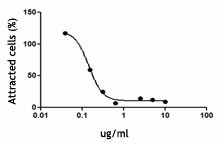
| Cat # | Size | Price | Quantity Check Availability | Save | ||
|---|---|---|---|---|---|---|
| 353749 | 100 µg | 252€ | ||||
| 353750 | 1 mg | 572€ | ||||
Human CXCR3, also known as GPR9, is a chemokine receptor that binds CXCL9, CXCL10, and CXCL11. It is a 38 kD seven-pass transmembrane receptor coupled to G-protein. CXCR3 is highly expressed by T cells (Th1), natural killer cells (NK cells), dendritic cells, mast cells, alveolar macrophages, eosinophils, and human airway epithelial cells. CXCR3 is important for effector lymphocyte recruitment into inflamed tissue in various inflammatory and autoimmune diseases, such as chronically inflamed liver, Crohn's disease, rheumatoid arthritis, multiple sclerosis, and inflammatory skin diseases.
Product DetailsProduct Details
- Verified Reactivity
- Human, Cynomolgus, Rhesus
- Reported Reactivity
- African Green, Baboon
- Antibody Type
- Monoclonal
- Host Species
- Mouse
- Immunogen
- Human CXCR3 transfectants
- Formulation
- 0.2 µm filtered in phosphate-buffered solution, pH 7.2, containing no preservative.
- Endotoxin Level
- Less than 0.01 EU/µg of the protein (< 0.001 ng/µg of the protein) as determined by the LAL test.
- Preparation
- The Ultra-LEAF™ (Low Endotoxin, Azide-Free) antibody was purified by affinity chromatography.
- Concentration
- The antibody is bottled at the concentration indicated on the vial, typically between 2 mg/mL and 3 mg/mL. Older lots may have also been bottled at 1 mg/mL. To obtain lot-specific concentration and expiration, please enter the lot number in our Certificate of Analysis online tool.
- Storage & Handling
- The antibody solution should be stored undiluted between 2°C and 8°C. This Ultra-LEAF™ solution contains no preservative; handle under aseptic conditions.
- Application
-
Block - Quality tested
FC - Verified - Recommended Usage
-
Each lot of this antibody is quality control tested by blocking. Chemotaxis of human CXCR3-transfected BaF3 cells was performed in the presence of 20 ng/ml of recombinant CXCL11. Addition of LEAF™ purified anti-human CXCR3 (clone G025H7) inhibits migration of hCXCR3 transfected BaF3 cells (ED50=0.15 µg/ml).
For immunofluorescent staining, it is recommended that the reagent be titrated for optimal performance for each application. Other formats of this clone are quality tested for flow cytometry. - Product Citations
-
- RRID
-
AB_2810564 (BioLegend Cat. No. 353749)
AB_2810565 (BioLegend Cat. No. 353750)
Antigen Details
- Structure
- CXC-chemokine receptor, G protein-coupled receptor, seven-pass transmembrane receptor
- Distribution
-
T cell subset, NK cells, plasmacytoid dendritic cells, GM-CSF activated CD34+ hematopoietic progenitors, mast cells, alveolar macrophages, eosinophils, and airway epithelial cells
- Function
- Essential in T cell recruitment to sites of inflammation
- Ligand/Receptor
- CXCL9, CXCL10, and CXCL11
- Cell Type
- Dendritic cells, Eosinophils, Epithelial cells, Hematopoietic stem and progenitors, Macrophages, Mast cells, NK cells, T cells, Tregs
- Biology Area
- Cell Biology, Immunology, Neuroinflammation, Neuroscience
- Molecular Family
- CD Molecules, Cytokine/Chemokine Receptors, GPCR
- Antigen References
-
1. Loetscher M, et al. 1996. J. Exp. Med. 184:963.
2. Cole KE, et al. 1998. J. Exp. Med. 187:2009.
3. Aksoy MO, et al. 2006. Am. J. Physiol. Lung Cell Mol. Physiol. 290:L909.
4. Curbishley SM, et al. 2005. Am. J. Pathol. 167:887.
5. Turner JE, et al. 2007. Mini. Rev. Med. Chem. 7:1089.
6. Wenzel J, et al. 2008. J. Invest. Dermatol. 128:67. - Gene ID
- 2833 View all products for this Gene ID
- UniProt
- View information about CD183 on UniProt.org
Related FAQs
- Does staining at room temperature or even at 37°C help for checking chemokine receptors expression?
-
Due to continuous recycling of many chemokine receptors, it may be worthwhile to consider staining at room temperature or at 37°C if the staining at lower temperature (which can potentially reduce receptor turnover) is not optimal.
- Do you guarantee that your antibodies are totally pathogen free?
-
BioLegend does not test for pathogens in-house aside from the GoInVivo™ product line. However, upon request, this can be tested on a custom basis with an outside, independent laboratory.
- Does BioLegend test each Ultra-LEAF™ antibody by functional assay?
-
No, BioLegend does not test Ultra-LEAF™ antibodies by functional assays unless otherwise indicated. Due to the possible complexities and variations of uses of biofunctional antibodies in different assays and because of the large product portfolio, BioLegend does not currently perform functional assays as a routine QC for the antibodies. However, we do provide references in which the antibodies were used for functional assays and we do perform QC to verify the specificity and quality of the antibody based on our strict specification criteria.
- Does BioLegend test each Ultra-LEAF™ antibody for potential pathogens?
-
No, BioLegend does not test for pathogens in-house unless otherwise indicated. However, we can recommend an outside vendor to perform this testing as needed.
- Have you tested this Ultra-LEAF™ antibody for in vivo or in vitro applications?
-
We don't test our antibodies for in vivo or in vitro applications unless otherwise indicated. Depending on the product, the TDS may describe literature supporting usage of a particular product for bioassay. It may be best to further consult the literature to find clone specific information.
Other Formats
View All CD183 Reagents Request Custom ConjugationCustomers Also Purchased
Compare Data Across All Formats
This data display is provided for general comparisons between formats.
Your actual data may vary due to variations in samples, target cells, instruments and their settings, staining conditions, and other factors.
If you need assistance with selecting the best format contact our expert technical support team.
-
Purified anti-human CD183 (CXCR3)

Human peripheral lymphocytes were stained with purified anti... -
APC/Cyanine7 anti-human CD183 (CXCR3)

Human peripheral blood lymphocytes were stained with CD3 FIT... -
FITC anti-human CD183 (CXCR3)

Human peripheral lymphocytes were stained with CD3 PE and CX... 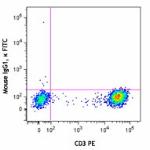
-
PE anti-human CD183 (CXCR3)
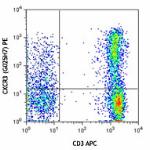
Human peripheral blood lymphocytes were stained with CD3 APC... 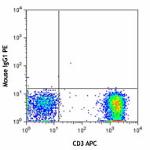
-
APC anti-human CD183 (CXCR3)
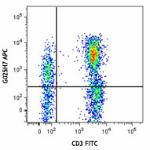
Human peripheral lymphocytes were stained with CD3 FITC and ... 
-
Alexa Fluor® 488 anti-human CD183 (CXCR3)
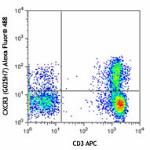
Human peripheral blood lymphocytes were stained with CD3 APC... 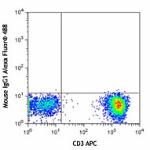
-
Alexa Fluor® 647 anti-human CD183 (CXCR3)
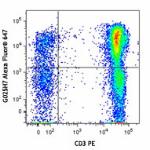
Human peripheral blood lymphocytes were stained with CD3 PE ... 
-
PerCP/Cyanine5.5 anti-human CD183 (CXCR3)

Human peripheral lymphocytes were stained with CD3 APC and C... -
Brilliant Violet 421™ anti-human CD183 (CXCR3)
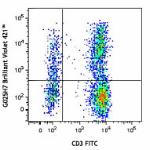
Human peripheral blood lymphocytes were stained with CD3 FIT... 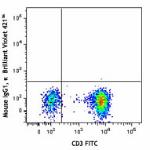
-
PE/Cyanine7 anti-human CD183 (CXCR3)

Human peripheral lymphocytes were stained with CD3 FITC and ... -
Pacific Blue™ anti-human CD183 (CXCR3)
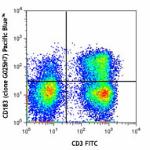
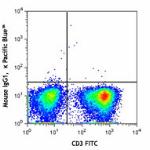
-
Brilliant Violet 510™ anti-human CD183 (CXCR3)
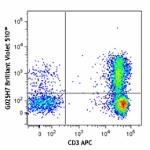
Human peripheral blood lymphocytes were stained with CD3 APC... 
-
Brilliant Violet 605™ anti-human CD183 (CXCR3)
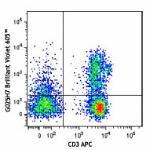
Human peripheral blood lymphocytes were stained with CD3 APC... 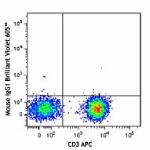
-
Brilliant Violet 650™ anti-human CD183 (CXCR3)
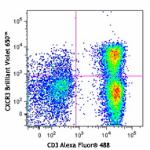
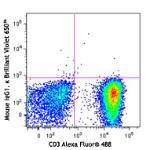
-
Brilliant Violet 711™ anti-human CD183 (CXCR3)
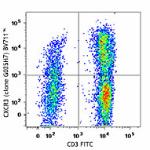
Human peripheral blood lymphocytes were stained with CD3 FIT... 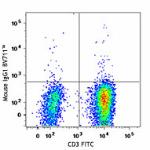
-
Purified anti-human CD183 (CXCR3) (Maxpar® Ready)
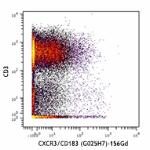
Human PBMCs stained with 170Er-anti-CD3 (UCHT1) and 156Gd-an... -
PE/Dazzle™ 594 anti-human CD183 (CXCR3)
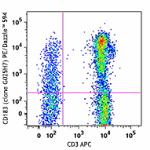
Human peripheral blood lymphocytes were stained with CD3 APC... 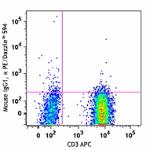
-
PerCP anti-human CD183 (CXCR3)

Human peripheral blood lymphocytes were stained with CD3 APC... 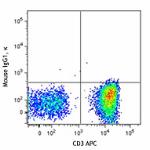
-
Brilliant Violet 785™ anti-human CD183 (CXCR3)

Human peripheral blood lymphocytes were stained with CD3 Per... -
Alexa Fluor® 700 anti-human CD183 (CXCR3)
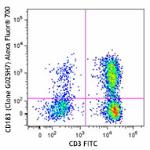
Human peripheral blood lymphocytes were stained with CD3 FIT... 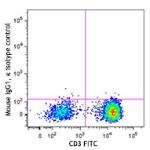
-
Biotin anti-human CD183 (CXCR3)
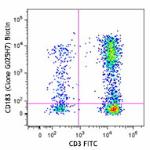
Human peripheral blood lymphocytes were stained with CD3 FIT... 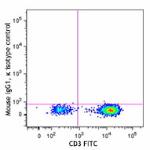
-
TotalSeq™-A0140 anti-human CD183 (CXCR3)
-
TotalSeq™-C0140 anti-human CD183 (CXCR3)
-
Ultra-LEAF™ Purified anti-human CD183 (CXCR3)

Anti-human CXCR3 (G025H7) blocks the chemotaxis of Baf3-hCXC... 
Human peripheral lymphocytes were stained with purified anti... -
TotalSeq™-B0140 anti-human CD183 (CXCR3)
-
APC/Fire™ 750 anti-human CD183 (CXCR3)

Human peripheral blood lymphocytes were stained with anti-hu... -
TotalSeq™-D0140 anti-human CD183 (CXCR3)
-
PE/Fire™ 810 anti-human CD183 (CXCR3) Antibody

Human peripheral blood lymphocytes were stained with anti-hu... -
APC/Fire™ 810 anti-human CD183 (CXCR3) Antibody

Human peripheral blood lymphocytes were stained with anti-hu... -
PE/Cyanine5 anti-human CD183 (CXCR3) Antibody

Human peripheral blood lymphocytes were stained with CD3 FIT... -
PE/Fire™ 640 anti-human CD183 (CXCR3)

Human peripheral lymphocytes were stained with anti-human C... -
PerCP/Fire™ 780 anti-human CD183 (CXCR3)

Human peripheral blood lymphocytes were stained with anti-hu... -
Spark Red™ 718 anti-human CD183 (CXCR3) (Flexi-Fluor™)
-
PE/Fire™ 700 anti-human CD183 (CXCR3)

Human peripheral blood lymphocytes were stained with anti-hu... -
PerCP/Fire™ 806 anti-human CD183 (CXCR3)

Human peripheral blood lymphocytes were stained with anti-hu... -
PE anti-human CD183

Typical results from human peripheral blood lymphocytes stai...

 Login / Register
Login / Register 








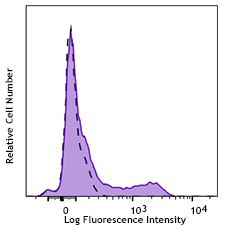
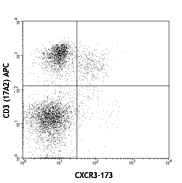
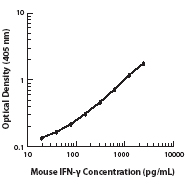
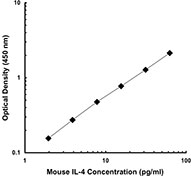







Follow Us